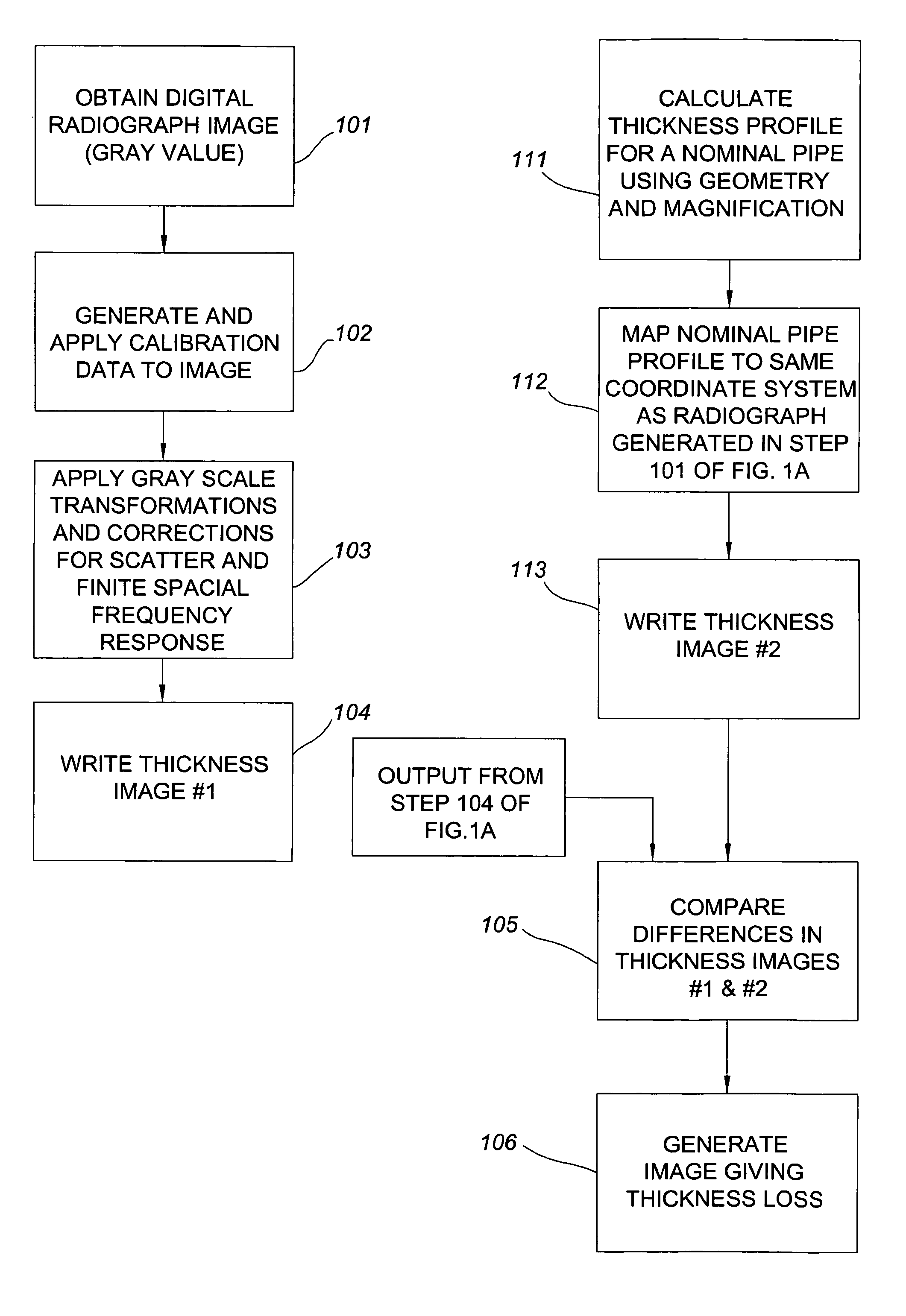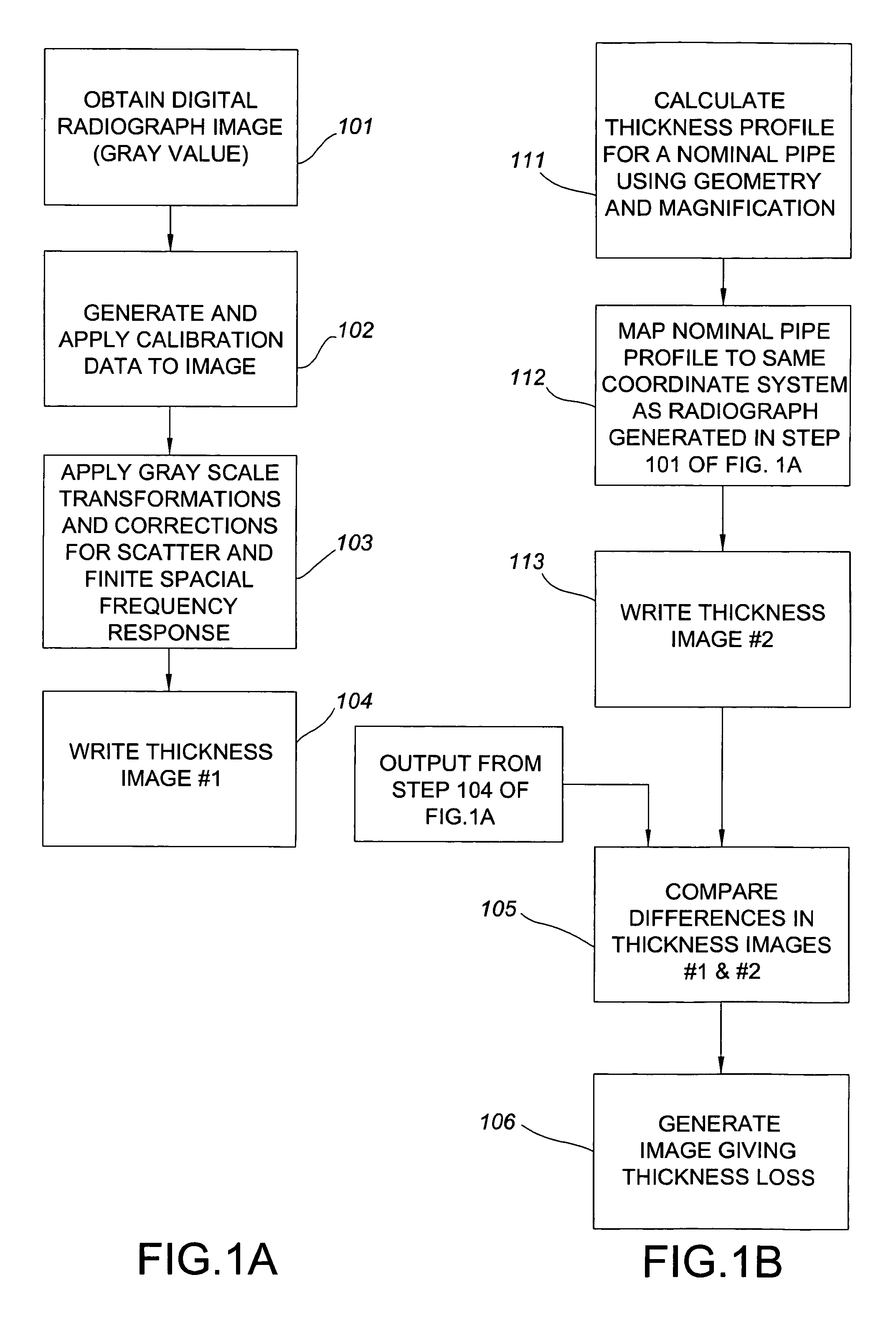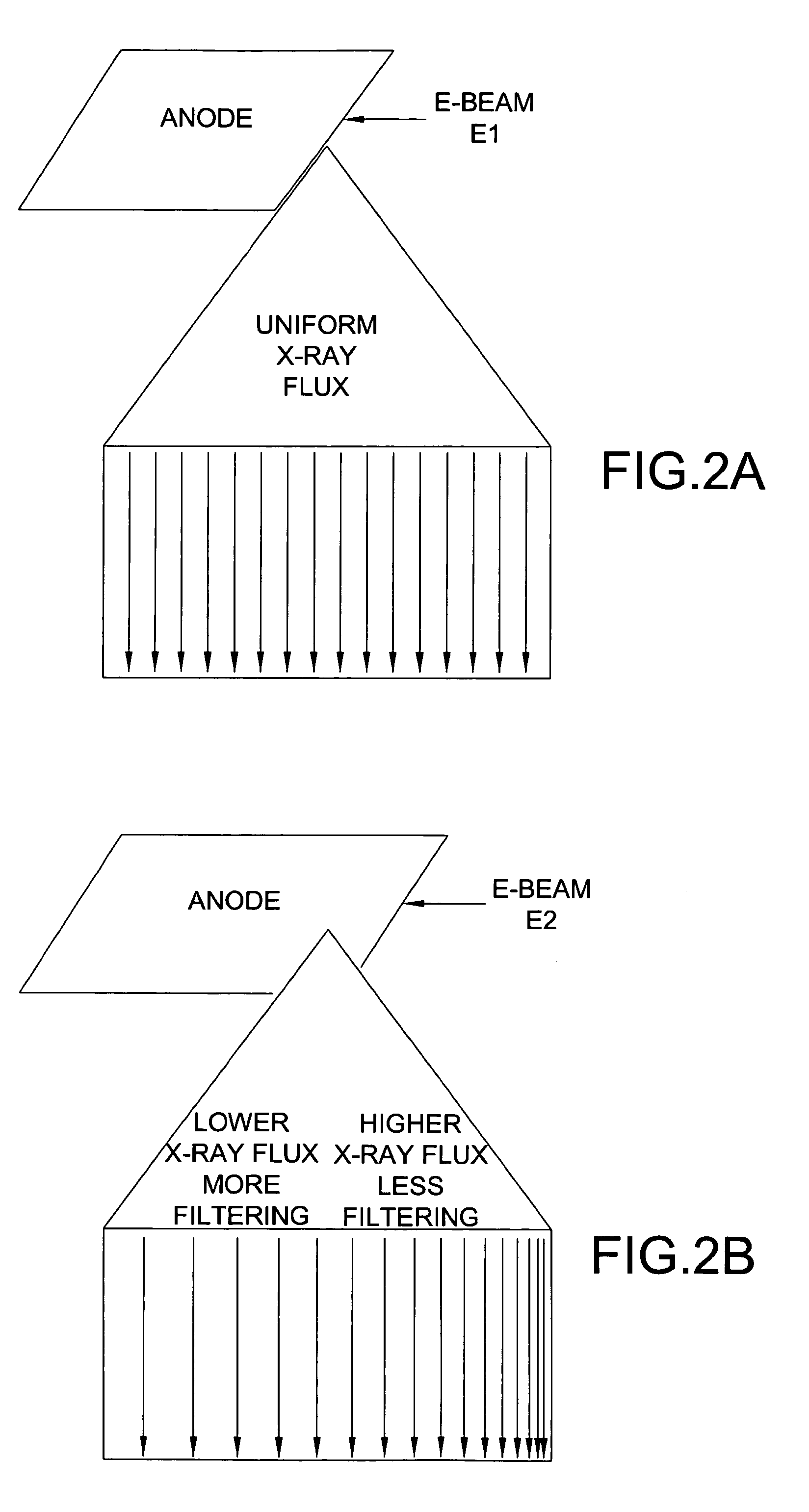Converting a digital radiograph to an absolute thickness map
a digital radiograph and absolute thickness technology, applied in the field of radiographic imaging systems, can solve the problems of piping and vessel infrastructure mechanical as well as chemical degradation, and the environment in which they reside can be quite hostile, and achieve the effects of reducing the number of instruments, and improving the accuracy of the imag
- Summary
- Abstract
- Description
- Claims
- Application Information
AI Technical Summary
Benefits of technology
Problems solved by technology
Method used
Image
Examples
Embodiment Construction
[0031]The exemplary embodiments of the present invention will be described below with reference to the accompanying drawings. In the following description, well known functions or constructions are not described in detail to avoid obscuring the invention in unnecessary detail.
[0032]The motivation for the invention is to utilize radiography for quantitative inspection purposes, rather than its primary use as a qualitative screening tool. Instead of using radiography as a screening tool that serves to identify features or defects, our aim is to use radiography as a primary inspection modality that is capable of estimating wall thicknesses at a level competitive with state of the art ultra-sound technology. If the level of absolute precision in the radiographic measurement is 2-10%, radiography has the potential of yielding more complete information during an inspection because it is an image-based modality which can cover a large area. However, in order to realize the prescribed preci...
PUM
 Login to View More
Login to View More Abstract
Description
Claims
Application Information
 Login to View More
Login to View More - R&D
- Intellectual Property
- Life Sciences
- Materials
- Tech Scout
- Unparalleled Data Quality
- Higher Quality Content
- 60% Fewer Hallucinations
Browse by: Latest US Patents, China's latest patents, Technical Efficacy Thesaurus, Application Domain, Technology Topic, Popular Technical Reports.
© 2025 PatSnap. All rights reserved.Legal|Privacy policy|Modern Slavery Act Transparency Statement|Sitemap|About US| Contact US: help@patsnap.com



